From his bizarre sex beliefs to his "Dear friend..." letters to Hitler, these 19 Gandhi facts and quotes uncover a dark side you'd never imagine.
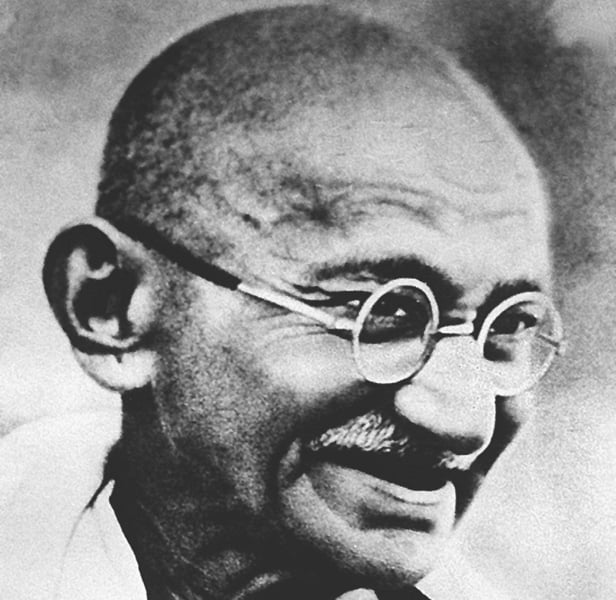
In 1885, Gandhi's father, Karamchand, developed a fistula and grew gravely ill. One night soon after, according to a 2010 biography, Gandhi was sitting up with his father, but eventually left to have sex with his new bride, Kasturba. Karamchand died while Gandhi was away.
Not long after, he went to South Africa, where perhaps his darkest chapter begins...AFP/Getty Images
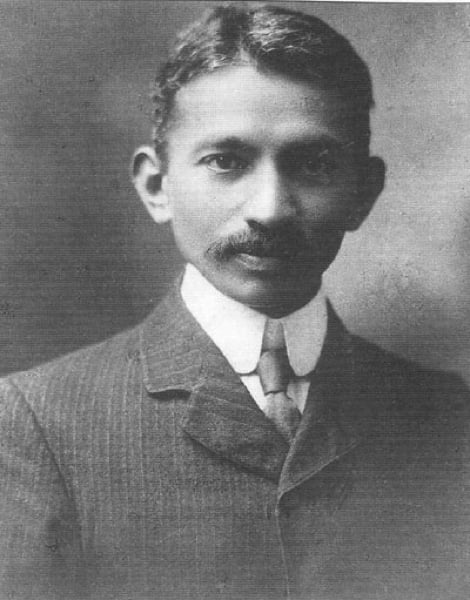
Before leading his historic push for India's independence from the British Empire, Gandhi famously led civil rights movements in South Africa, another British colony, between 1893 and 1915, when he was in his mid-20s through his mid-40s.
While Gandhi's time fighting for the rights of Indians in South Africa is often now mythologized as the heroic precursor to his later efforts in India, the dark side of this tale reveals that Gandhi's motivations in South Africa included his strident racism against the local black populations there.
"Ours is one continual struggle against a degradation sought to be inflicted upon us by the Europeans, who desire to degrade us to the level of the raw Kaffir [a slur now classified as hate speech and generally considered to be the equivalent of "nigger" in the United States] whose occupation is hunting, and whose sole ambition is to collect a certain number of cattle to buy a wife with and, then, pass his life in indolence and nakedness," Gandhi said during an address in Bombay in 1896.
"Kaffirs are as a rule uncivilised—the convicts even more so. They are troublesome, very dirty and live almost like animals," he wrote in Indian Opinion in 1908.
Above: Gandhi in South Africa, 1909.Wikimedia Commons

An oft-recited turning point in Gandhi's life involves his being thrown off a train for refusing to move out of first class, which was reserved for whites, early on during his time in South Africa. However, during both that incident and the entire civil rights movement that followed, Gandhi wasn't so much campaigning for Indians' rights in and of themselves, but more so that Indians simply be given more rights than the local blacks.
"A general belief seems to prevail in the colony that the Indians are little better, if at all, than the savages or natives of Africa. Even the children are taught to believe in that manner, with the result that the Indian is being dragged down to the position of a raw Kaffir," he said.
When the British moved to placing the Indian and black populations together, Gandhi harshly resisted, writing to the local health officer in 1905, "Why, of all places in Johannesburg, the Indian location should be chosen for dumping down all kaffirs of the town, passes my comprehension. Of course, under my suggestion, the Town Council must withdraw the Kaffirs from the Location. About this mixing of the Kaffirs with the Indians I must confess I feel most strongly. I think it is very unfair to the Indian population, and it is an undue tax on even the proverbial patience of my countrymen."
Above: Gandhi (center row, fourth from right), with the Indian Ambulance Corps in South Africa, circa 1899.Wikimedia Commons
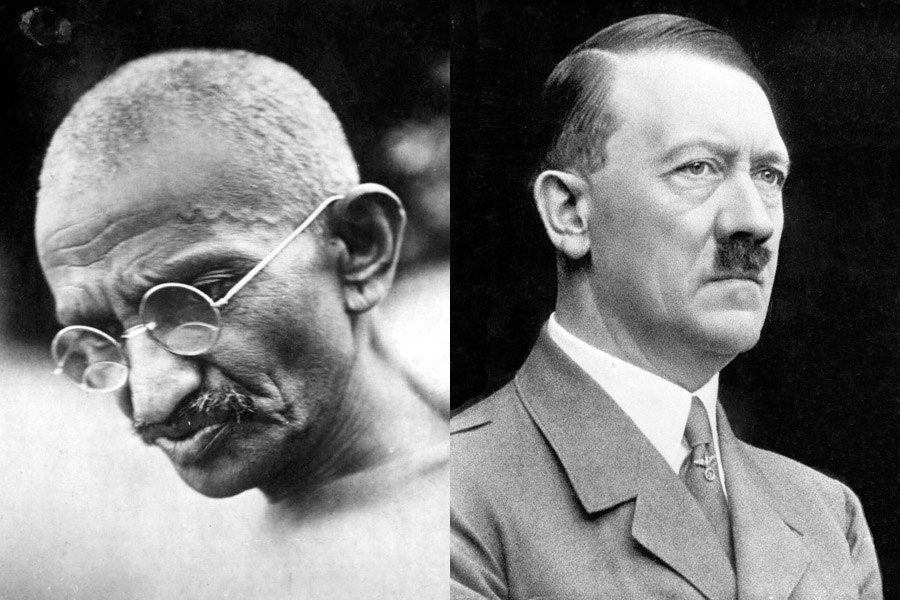
Yes, when Gandhi wrote to Hitler at least twice in 1939 and 1940, he did so to call for peace and, yes, Gandhi was, by all accounts, an impossibly kind and gracious person who might address anyone as "friend."
Nevertheless, it's quite something to see the 20th century's most revered figures write a "Dear friend..." letter to the century's greatest monster -- and then add things like, "We have no doubt about your bravery or devotion to your fatherland, nor do we believe that you are the monster described by your opponents."Wikimedia Commons

Once again, you've got to account for both Gandhi's peerlessly magnanimous warmth and the perils of historical hindsight, but just as it was with Hitler, it's strange to hear that Gandhi had some kind, admiring words about the brutal fascist dictator that led Italy against the Allies during World War II.
In his 2011 book, Subhash Chandra Bose in Nazi Germany, author Romain Hayes explains that, after the two met in 1931, Gandhi called Mussolini "one of the great statesmen of our time," and went on to write the following in a letter to a friend:
"Many of his reforms attract me. He seems to have done much for the peasant class. I admit an iron hand is there. But as violence is the basis of Western society, Mussolini's reforms deserve an impartial study.”Wikimedia Commons
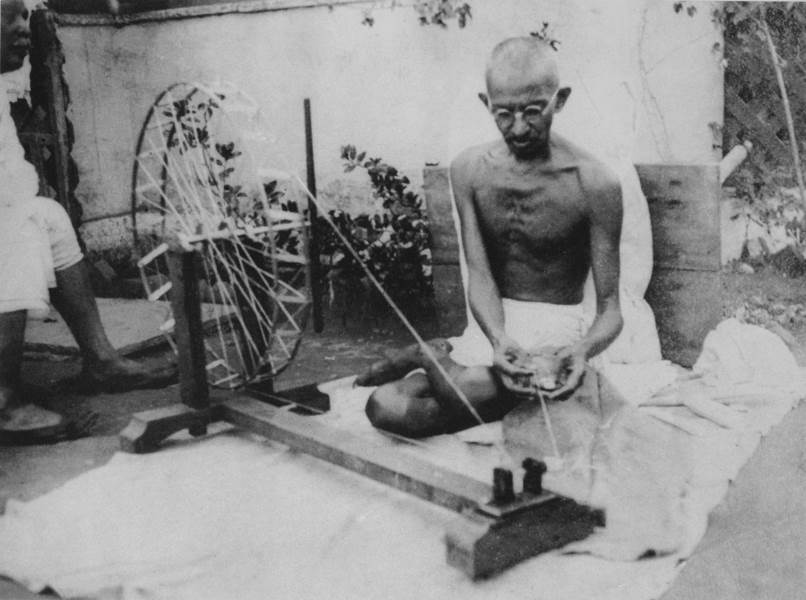
Although Gandhi is now famous for both his vegetarianism and his historic fasts lasting up to 21 days, his unusual eating behaviors do not at all end there.
For much of his adult life, he would restrict himself to eating only nuts, grains, fruits, and vegetables -- and only in small quantities.
Finally, with his health failing to the point of teeth falling out, his doctors were able to convince him to at least drink some milk, but Gandhi could only be convinced to drink goat's milk. He even traveled around with a goat to be sure that the milk he drank was both fresh and actually from a goat (and not from another animal surreptitiously tapped by someone in his entourage).
And one of the chief reasons for all of these dietary restrictions: He believed it would curb his sex drive.Wikimedia Commons

Gandhi's unusual diet very often left him highly constipated and spending hours at a time in the bathroom.
But where things get weird (at least for most Westerners) -- according to Gandhi: Naked Ambition, a 2010 biography by Jad Adams -- is in how Gandhi dealt with his constipation.
According to Adams, Gandhi would routinely invite one or more of the many female companions he kept around into the bathroom to visit with him while he was on the toilet. STR/AFP/Getty Images
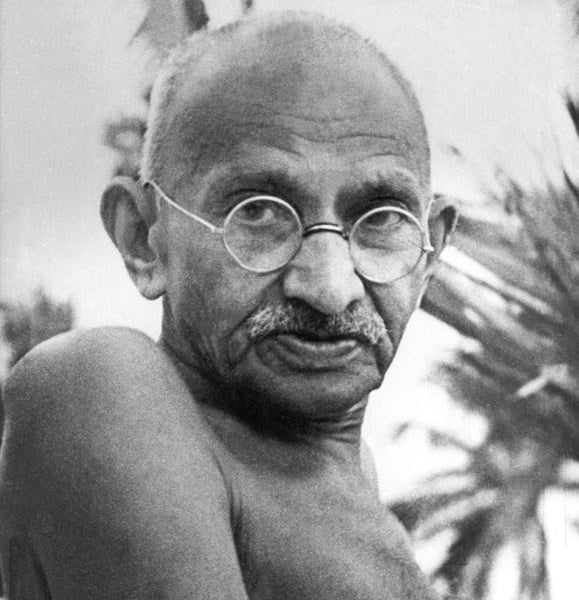
According to Great Soul, a 2011 biography by Joseph Lelyveld, Gandhi happily gave himself enemas that went above and beyond the call of duty, as far as his constipation went -- often giving himself two a day.
However, things get more uncomfortable when you learn that Gandhi also regularly subjected his young female companions to daily enemas as well.Wikimedia Commons
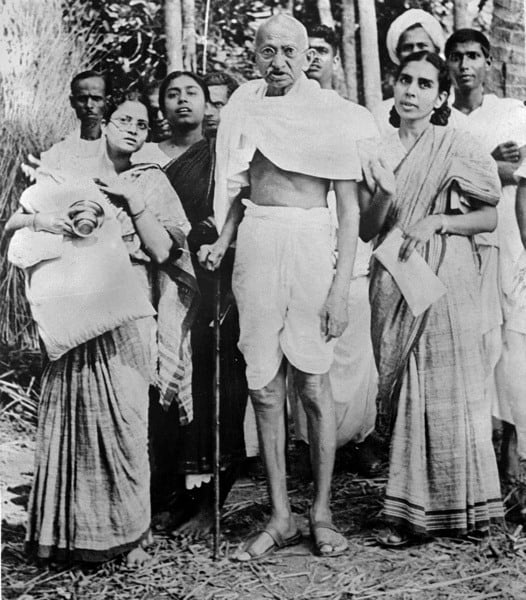
Throughout much of his adult life, Gandhi kept plenty of young female companions close to him and allowed these relationships to take several different dark turns.
For starters, he often kept pairs of girls as his daily companions to address his needs right down to basic movement, with Gandhi referring to them, according to Adams, as his "walking sticks."
Moreover, Gandhi made things uncomfortably personal in both routinely bathing with these girls and habitually starting the day by asking them if they'd had a good bowel movement.
What's worse, even if we can believe that these teenage girls had the ability to consent to any of this, it's not clear that there was any consent in the first place.
According to Adams, Gandhi first met one of his most famous companions, Sushila Nayar, when she was just six and was brought to him by her mother. There, with the girl on his lap, Gandhi asked her mother to gift her to him. Nayar didn't become his just then, but did return as a teenager and became Gandhi's close companion.
Above: Gandhi with his granddaughter Ava (right) and Sushila Nayar (left) during his tour of Bengal province in 1946.AFP/Getty Images
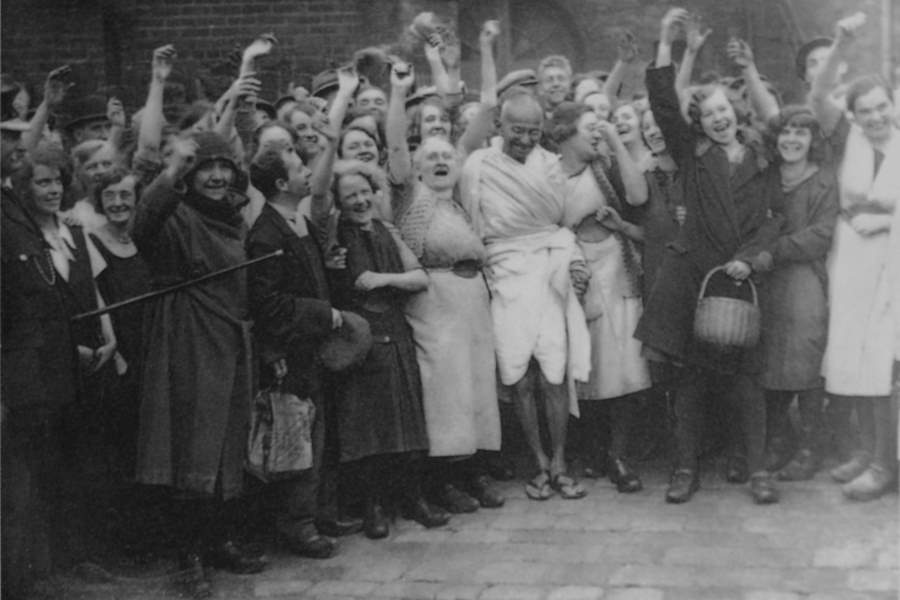
According to Adams' biography, in addition to tending to his needs regarding bathing and bowel movements, Gandhi tasked his young female companions with regularly giving him massages while he was in the nude. Reportedly, he liked mustard oil and lime juice to be used during these massages.Wikimedia Commons
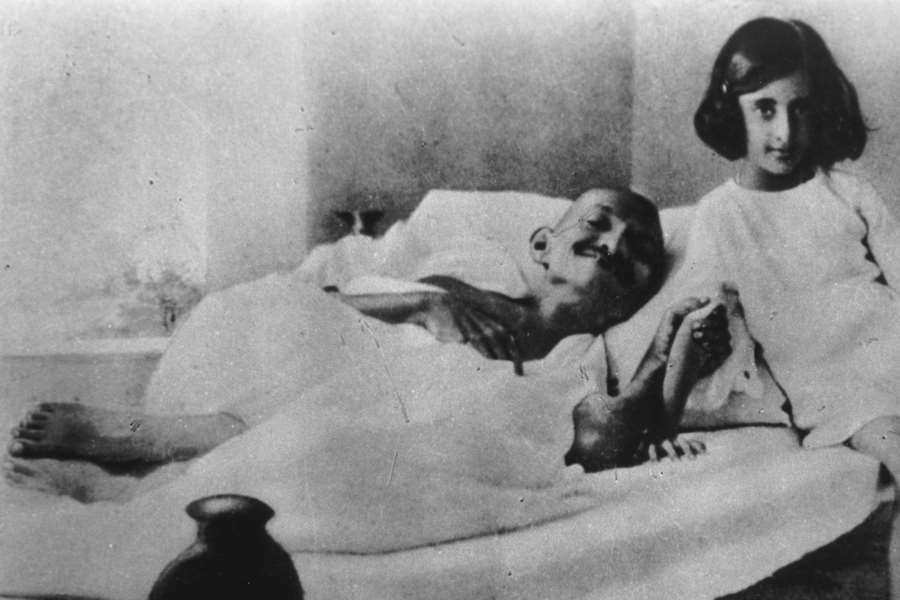
After Gandhi's father died while Gandhi was off having sex, and once again after coming to the realization that he couldn't serve humanity while also consumed by lust, a thirty-something Gandhi decided that he must take a vow of chastity -- and tested that chastity in some rather odd ways.
Although he forbade men and women (even husbands and wives) from sleeping together while at his ashrams, Gandhi had many women -- some of them teenagers, some of them married -- sleep nude in his bed.
Above: Gandhi with Indira Nehru -- the daughter of one of Gandhi's chief associates and the future prime minister of India, Jawaharlal Nehru, who would herself serve as India's prime minister in the 1980s -- in 1924.Wikimedia Commons
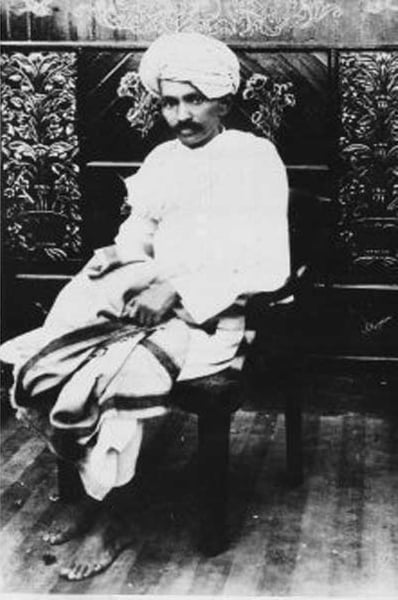
The year before his death, a 77-year-old Gandhi cast a then 33-year-old Sushila Nayar (who Gandhi had asked to be given to him as a gift by her mother when she was just six) out of his bed in favor of a younger woman: Manu, his 18-year-old grandniece.
Gandhi explicitly stated that sleeping with Manu in the nude yet resisting sexual temptation was his most important experiment in chastity, telling her that "[we] must put our purity to the ultimate test."
At that same time, he also pulled Abha, the 18-year-old wife of his grandnephew, into bed with him -- and things quickly became problematic. When Gandhi began publicly speaking about his sleeping arrangement, even those in his inner circle asked that he remove the girls from his bed. He initially refused; finally, after several of his close associates parted ways with him over the matter, he relented.
Nevertheless, he asked that Manu share their sleeping arrangement with the world once he died. When that happened just months later, however, Gandhi's associates, including his son, made it clear to Manu that she should keep her mouth shut.Wikimedia Commons
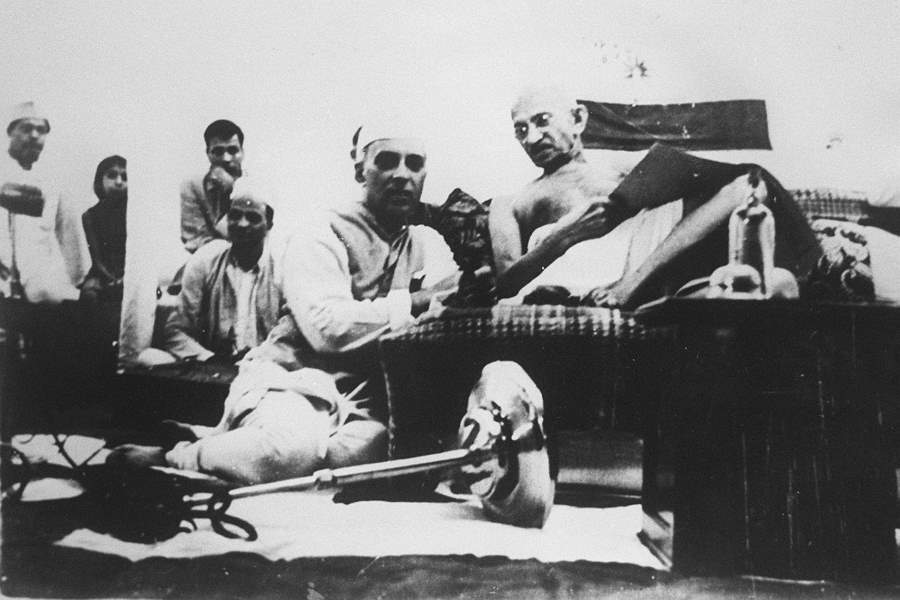
Given his extraordinary chastity experiments, Gandhi is on record as being particularly concerned about avoiding any kind of ejaculation.
In describing his philosophy of celibacy, he stated that he strove to be "One who never has any lustful intention, who, by constant attendance upon God, has become proof against conscious or unconscious emissions." He thus complained about the nocturnal emissions he suffered and said that, "One who conserves his vital fluid acquires unfailing power."
What's more, he kept none of this to himself, instead making his views on semen and ejaculation part of his sermons, and even asserting that his avoidance of ejaculation was essential in helping India reach independence, stating, "I hold that true service of the country demands this observance."
Above: Jawaharlal Nehru (left) and Gandhi conferring in Bombay, 1942.STR/AFP/Getty Images

While Gandhi clearly had his own, deep-seated sexual hang-ups resulting in fervid chastity and experiments designed to test that chastity, what's more problematic is that he acted out similar experiments with others -- specifically, children.
Although husbands and wives weren't even allowed to sleep together at his ashrams, the boys and girls were -- all under Gandhi's peculiar supervision.
First, they would bathe together; "I sent the boys reputed to be mischievous and the innocent young girls to bathe at the same time," Gandhi said, according to Adams' biography. Then, they would sleep, beds very close together, with Gandhi often there himself to act as a watchdog.
If any of the boys or girls succumbed to temptation -- temptation that Gandhi himself all but orchestrated -- they were punished. And to add insult to injury, it seems that the boys didn't get it as badly as the girls, whose hair would be chopped off if they misbehaved.Wikimedia Commons
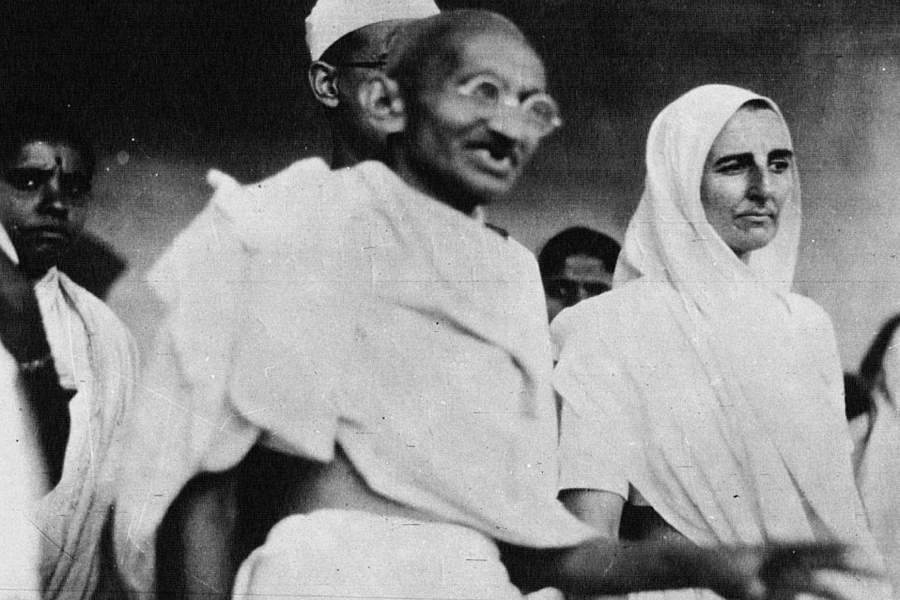
Although Gandhi married Kasturba Kapadia in an arranged marriage while teenagers, they stayed together all their lives. Nevertheless, even if Gandhi's needs weren't overtly sexual, they did draw him into many inappropriately intimate relationships with other women (aside from the young girls we've already discussed).
There was Madeleine Slade, the daughter of a British admiral who left home to devote herself to Gandhi and his work. The two were inseparable and exchanged countless intimate missives that, many note, read like love letters.
Then there was Saraladevi Choudhurani, a Bengali activist to whom he grew very close, inviting her to his ashram and enraging his wife by spending plenty of time alone with her and allowing her to avoid the chores required of everyone else. In a letter to a friend, he once referred to her as his "spiritual wife."
Above: Gandhi and Slade in 1932.Wikimedia Commons
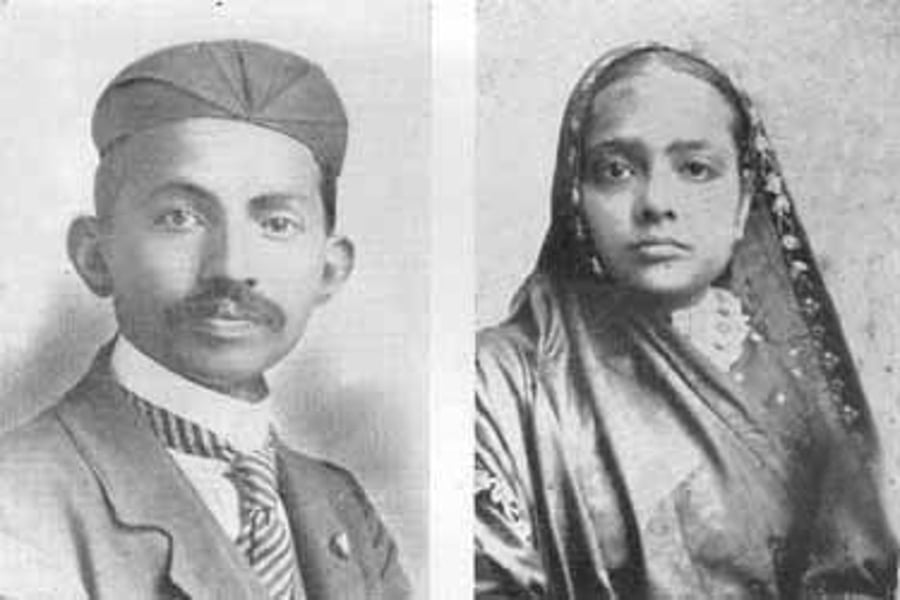
Although Gandhi and his wife stayed married their entire lives, it's readily apparent that Gandhi's vows of poverty and chastity drove this once well-to-do couple apart, and that Gandhi felt that his wife was never on the same spiritual and intellectual plane as he. He would go on to say some cruel things about her, including:
"I simply cannot bear to look at Ba's face. The expression is often like that on the face of a meek cow and gives one the feeling as a cow occasionally does, that in her own dumb manner she is saying something."
Above: Gandhi and Kasturba in 1902.Wikimedia Commons
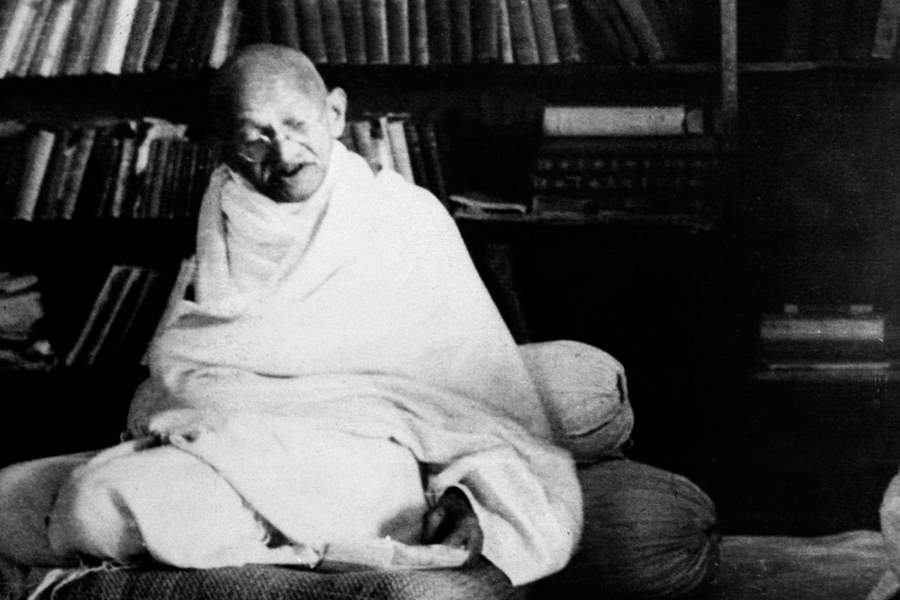
What's troubling about Gandhi's unusual lifestyle choices -- celibacy, poverty, fasting -- is that he forced them upon his family as well. By all accounts, his wife managed to put up with these things, but they (namely, the poverty) eventually helped eat away at her health. In early 1944, when she was stricken with pneumonia, Gandhi once again imposed his choices upon her and refused to allow her to be injected with "alien medicine," i.e. penicillin.
Soon after, she died. And not long after that, Gandhi himself contracted malaria. But this time, he allowed doctors to inject him with quinine and save his life.OFF/AFP/Getty Images

Though plenty of ink has been spilled over Gandhi's supposed feminism, there are just too many facts and stories to the contrary to ignore.
According to the Guardian, he: "believed menstruation was a manifestation of the distortion of a woman's soul by her sexuality;" argued that women should be responsible for sexual assaults carried out upon them; contended that fathers are justified in killing daughters that have been sexually assaulted in order to preserve family honor; labelled women who used contraceptives as whores; and once chopped off the hair of two female followers who were being harassed so that the perpetrators would stop.
Above: Gandhi walking with his followers during the famed "salt march" in 1930.AFP/Getty Images

In the 1930s, Gandhi and Jawaharlal Nehru (his associate and eventually the first prime minister of India) both led campaigns to have all traces of homoerotic tradition removed from displays in India's Hindu temples as part of a "sexual cleansing" initiative.Wikimedia Commons
Though the following may be as trite as it is true, everyone has a dark side.
Whether it's respected founding fathers and presidents, beloved children's book authors and rock stars, or even sanctified religious leaders, there's not a single person without some troubling, or at least bizarre, skeletons in their closet.
And because no one is without skeletons, we needn't necessarily crucify anyone, no matter how deified, over their dark side. But there's no reason to run away from investigating and attempting to understand those dark sides either. Such is the case with Mahatma Gandhi, certainly one of the most universally revered figures in modern history.
With that in mind, above are 19 Gandhi facts and quotes that reveal the dark, bizarre side of the man rightfully revered for leading India to independence and serving as a beacon of hope, peace, and freedom around the world.
Intrigued by these dark Gandhi facts and quotes? Next, for a change of pace, check out 15 uplifting Gandhi quotes that might just change your life. Then, have a look at 21 inspirational Nelson Madela quotes that prove anything is possible. Finally, have a look at 40 Bruce Lee quotes that will touch your heart and soul.






